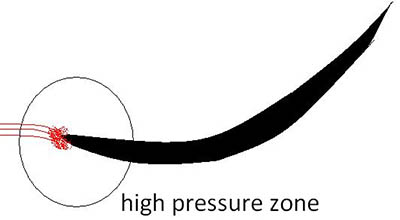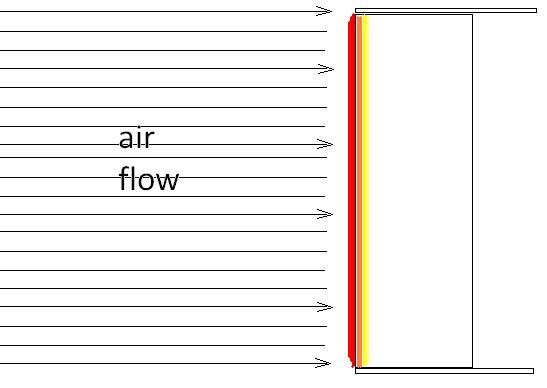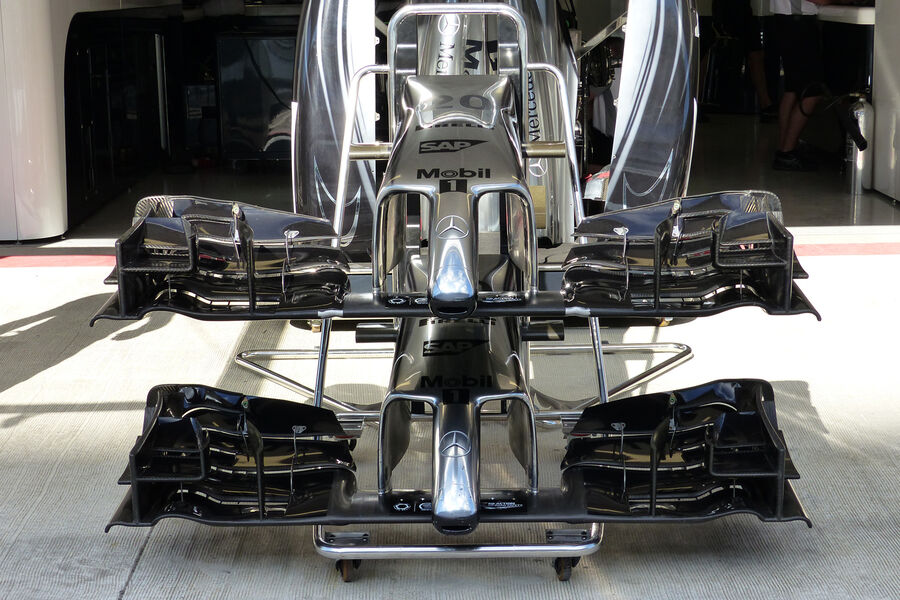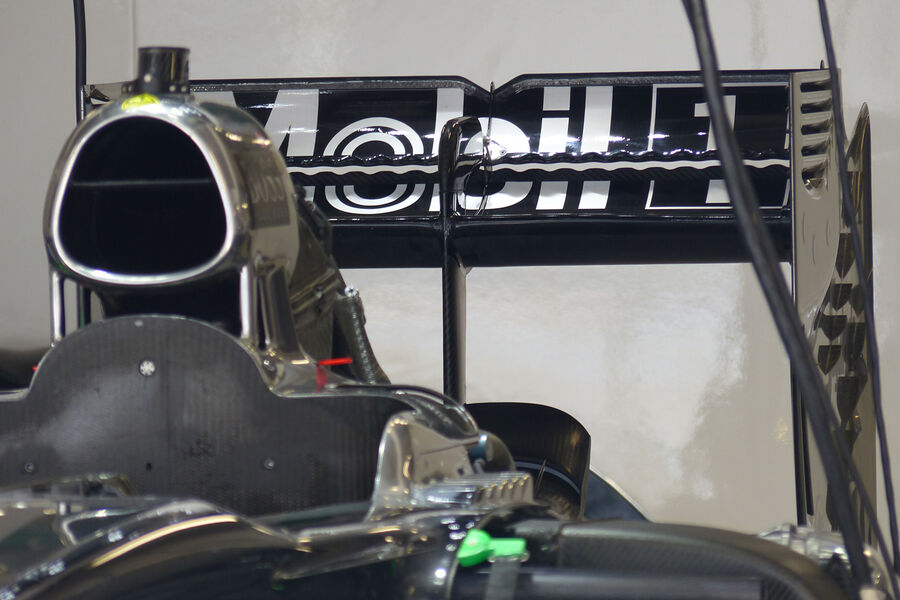And i take it STR in 2012 was too extreme?

Maybe a mod can just break this off to a thread? Sorry about that, i´m just curious about the thought concept of this whole thing.

So I presume this undercut wouldn't work properly with those large wishbone fairings? I'm not an aero man at all, but the wishbones appear to be counter productive to what you've just said- to this layman anywayDipesh1995 wrote:I would say that the large undercut is trying to get as much air as possible to rear of the car. The larger the undercut, the less likely air flow could leak from the top of the floor to underneath it and disturbing the flow underneath the car. Also, the larger and tighter the undercut, the faster the velocity of the air is around the sidepods as a stronger low pressure region is created around them and towards the coke bottle area thus increasing the velocity of the air which would then flow on top of the diffuser increasing downforce. Obviously if the sidepod undercut is too aggressive, then there is chance the air flow will stall so there is a balance of increasing the velocity of the airflow around the sidepods and towards the coke bottle without stalling it.
There seems to be some confusion about those wishbones. At first glance all they seem to do block the airflow hence why many have called them blockers. I would say the term "blocker" is actually a misnomer. Think about it this way, if a car is moving through the air, the air is GOING to flow around it somehow. So on the McLaren there is the air flowing toward the back of the car along the floor. The air then hits the suspension mushrooms (what has been termed as blockers). The airflow has to go somewhere. It can't go straight through obviously except in the small gaps. It can't go underneath as the diffuser roof is there. It only really has one direction to go, upwards at an angle. Therefore behind the suspension mushrooms will be a low pressure zone that increases the pressure differential in the diffuser and hence pulls more air through it increasing downforce.Gaz. wrote:So I presume this undercut wouldn't work properly with those large wishbone fairings? I'm not an aero man at all, but the wishbones appear to be counter productive to what you've just said- to this layman anywayDipesh1995 wrote:I would say that the large undercut is trying to get as much air as possible to rear of the car. The larger the undercut, the less likely air flow could leak from the top of the floor to underneath it and disturbing the flow underneath the car. Also, the larger and tighter the undercut, the faster the velocity of the air is around the sidepods as a stronger low pressure region is created around them and towards the coke bottle area thus increasing the velocity of the air which would then flow on top of the diffuser increasing downforce. Obviously if the sidepod undercut is too aggressive, then there is chance the air flow will stall so there is a balance of increasing the velocity of the airflow around the sidepods and towards the coke bottle without stalling it.

Seems like the radiator layout is the reason for the sidepod shape. But was this done to make the rear wishbone devices work better? It looks like they wanted to exhaust the cooling flow higher than the rest.CjC wrote:Definitely!sectionate wrote:I still think the rear of the engine cover looks so bulky, when compared to other cars.
We haven't seen the slimmed down side pods that was speculated early in the season.
I posted a gratuitously long and speculative missive about it here.Duke wrote:Yes you wonder how it works at all really. Odd [radiator] layout.
To be nitpicky, in a classic non-Meredith plenum, the higher pressure on the intake side drives the air through the radiator. That's why the plenum cross section area increases away from the opening. As the air slows, its pressure increases. This is what drives the air through the radiator - it's not sucked through from the back side. The lower pressure on the back side is due to the air passing through the restrictive fins of the radiator. There isn't a low pressure area there sucking the air through.bhall II wrote:I posted a gratuitously long and speculative missive about it here.Duke wrote:Yes you wonder how it works at all really. Odd [radiator] layout.
Basically the idea is to control air flow through the radiators via a pressure differential between the intake side and the exit side of the sidepod. ... air will be pulled through the radiator ...
flyboy2160 wrote:To be nitpicky, in a classic non-Meredith plenum, the higher pressure on the intake side drives the air through the radiator. That's why the plenum cross section area increases away from the opening. As the air slows, its pressure increases. This is what drives the air through the radiator - it's not sucked through from the back side. The lower pressure on the back side is due to the air passing through the restrictive fins of the radiator. There isn't a low pressure area there sucking the air through.bhall II wrote:I posted a gratuitously long and speculative missive about it here.Duke wrote:Yes you wonder how it works at all really. Odd [radiator] layout.
Basically the idea is to control air flow through the radiators via a pressure differential between the intake side and the exit side of the sidepod. ... air will be pulled through the radiator ...
And here I've been, this whole time, thinking those shrouds served to protect fingers. Learned something new today.trinidefender wrote:[...]
bhall almost all radiators are set up that way, even on road cars. You will notice that manufacturers tend to seal the area around radiators so that there is a larger pressure differential between each side of the radiator and airflow is forced/pulled through the radiator making a radiator much more efficient than it would be if airflow would be allowed to go around the radiator.
[...]
No, you're wrong. When you do an actual engineering analysis of these things (which I have) instead of the typical F1T non-number pseudo-science by non-engineers and non-scientists, the analysis is as I described it. The incoming air energy is the driver. The outlet and radiator downstream flow path have an influence, but you always start with the properties of the incoming air as the main driver of the flow.trinidefender wrote:...
flyboy2160 what? You do realise that airflow always goes from high pressure to low pressure right? That means that it doesn't matter if the air pressure is higher on the (radiator) intake side, lower on the exit side or a combination of the two. All that matters is that there is a pressure differential there. The higher the pressure differential the higher the force on the air to move through the radiator fins....
There is no such thing as a "driver." Air always moves from high pressure to low pressure. That is a fact. I didn't explicitly disagree with your statement, all I did was point out that on any radiator there has to be a pressure differential for air to flow through it. Whether that pressure differential comes from high at one side or low at the other is largely irrelevant.flyboy2160 wrote:No, you're wrong. When you do an actual engineering analysis of these things (which I have) instead of the typical F1T non-number pseudo-science by non-engineers and non-scientists, the analysis is as I described it. The incoming air energy is the driver. The outlet and radiator downstream flow path have an influence, but you always start with the properties of the incoming air as the main driver of the flow.trinidefender wrote:...
flyboy2160 what? You do realise that airflow always goes from high pressure to low pressure right? That means that it doesn't matter if the air pressure is higher on the (radiator) intake side, lower on the exit side or a combination of the two. All that matters is that there is a pressure differential there. The higher the pressure differential the higher the force on the air to move through the radiator fins....





#aerogollumturbof1 wrote: YOU SHALL NOT......STALLLLL!!!